In this article, we will discuss birch tree allergies and how and when their pollen spreads.
Birch tree allergy facts and figures
| Birch tree (Genus: Betula) | Pollen allergy profile |
|---|---|
| Pollen season | Spring |
| Pollination type | Primarily wind transported. Trees release abundant pollen in the air. |
| Cross-reactivities with other pollen | Alder, Hazelnut, Hornbeam (the member of Betulaceae family) |
| Pollen source | Green, thin, cylindrical male catkins that turn yellow and brown upon maturation. |
| Gender | Monoecious: Each tree has both male and female flowers (catkins). |
| Bark | European birch: Silvery white mixed with dark brown or grey bark. River birch: Very flaky, peeling brown, beige, with reddish hues (see pictures below) |
| Fruit | The female catkins when fertilized by pollen mature into very dark brown seedbeds. |
How to identify a birch tree (Betula)?
In this article, we will cover three different species of birch trees. By association, you will be able to recognize other species and varieties.
Generally, the Himalayan, European white, Japanese, and Paper birches, all have some form of white barks. In contrast, the River birch has a flaky brown/beige bark. The trees generally have long limp twigs that hang loosely, which have serrated almost triangular leaves with saw-tooth edges.
Birch is a deciduous tree that changes color in autumn before losing its leaves. In this article, first, we will show you how to identify birch tree’s bark, leaves, flowers, and fruit. Then, we will discuss its pollen and how it spreads.
Bark and Trunk
The European white birch (Betula pendula), also known as silver birch always has a silver-white color in its bark. Depending on the variety, it is either smooth, spotty with dark grey, or flaky.
The Himalayan birch (Betula utilis) has mostly white birch.
River birch (Betula nigra) has beige and brown bark, which peels off to show reddish hues on the other side.
Leaves
Small leaves arrange on the twig in an alternate fashion. The twigs hang loosely on the tree giving the tree a weeping canopy.
The birch leaves are dark green or yellow-green during summer with serrated (saw-toothed) edges. The leaves turn yellow, or orange in autumn. The leaves are triangular or ovate in shape generally slightly longer than they are wide.
Catkins (flowers).
Birch trees have male and female flowers called catkins on the same tree.
The male flowers are shiny green when young and turn yellow-brown when mature. In most species, the catkins take six to eight months of maturation before they release pollen in spring[1].
The female flowers are lighter green and fatter compared to their male counterparts. They turn brown in summer and produce seeds. If not eaten by birds or insects, they turn black and remain on trees for the whole year before falling off.
Trees
Some species and varieties of birch trees grow only 10 feet and some can grow as tall as 60 feet. The trees are generally much taller than they are wide.
Where do birch trees grow in the US?
There are dozens of birch species that grow across the US. The two species – European white birch (Betula pendula) and River birch (Betula nigra) pretty much cover all 50 US states[2].
Paper birch and water birch are the other native trees that grow across the US.
How does birch pollen spread?
Birch tree releases its pollen in the air during spring and wind can carry its pollen many miles. The birch tree is very common in the US, so it is likely that you have one nearby.
Every single catkin on the tree is capable of releasing up to six million pollen and each tree is capable of releasing up to 5 billion pollen[R3].
What does birch pollen look like?
Birch pollen looks like a fine yellow powder when collected in a Petri dish. However, each individual grain is invisible to the eye when it’s airborne.
Birch pollen grain is about 20 microns (0.02mm) in size and has three protruding pores with dark circles around them. Betula pollen: Triporate with annulate and aspidate pores.
When do birch trees bloom and release pollen?
The birch trees allergy season is spring. In California, they release pollen during March and April. In Calgary, Canada, which has a much colder climate, the trees release pollen during April and May. Therefore, it is fair to assume that the colder East Coast of the US also experiences peak birch pollen season during April and May.
Each birch tree is capable of releasing up to five billion pollen in a year[R3]. However, birch trees do not release the same amount of pollen every year. Some years they release a lot, and in others, they release very little. Our air sampling in Burlingame, California has confirmed this finding.
The pollen schedule for birch can vary by one to two weeks each year depending on the weather and rainfall. For accurate weekly pollen reports, please check out our pollen count page.
How do you know if a birch tree is releasing pollen?
All birch trees have separate male and female flowers on the same tree (monoecious). The mature male flower (catkin) is responsible for producing and releasing pollen and causing birch tree allergies.
The male flower development starts in summer and it matures through winter before releasing pollen in spring. Just before releasing the pollen, the male catkins start showing yellow and brown hues.
If you see yellow-green catkins hanging on a birch tree during spring, it means the tree is releasing pollen. The catkin eventually turns brown and falls to the ground.
The pollen from the catkins on the ground can also become airborne if they are disturbed by wind, humans, or machines like leaf blowers.
Final thoughts
Birch tree allergies are common in the US as well as in Europe. It belongs to the Betulaceae family, which also includes another allergen, the Alder tree. It is common, as is the case for the author, if you react to the pollen of one tree, you react to the other as well[4].
Don’t forget to read about other trees like oak (Quercus), redwood (Sequoia), hackberry (Celtis), sycamore (Platanus), and sweetgum (Liquidambar styraciflua) that bloom alongside birch trees during spring.
Sources
- https://www.srs.fs.usda.gov/pubs/misc/ag_654/volume_2/betula/nigra.htm
- https://plants.usda.gov/
- Molecular analysis confirms the long-distance transport of Juniperus ashei pollen (nih.gov)
- https://pubmed.ncbi.nlm.nih.gov/32040996/
References
- Allergy Plants by Mary Jelks, M.D.
- Plant identification terminology by James G. Harris and Melinda Woolf Harris (Second Edition)
- Sampling and indentifying pollens and Molds by E. Grant Smith
All pictures, unless otherwise credited to another source, are taken by the author and are copyrighted material. The pollen picture is taken in our aerobiology lab using an Olympus compound microscope.

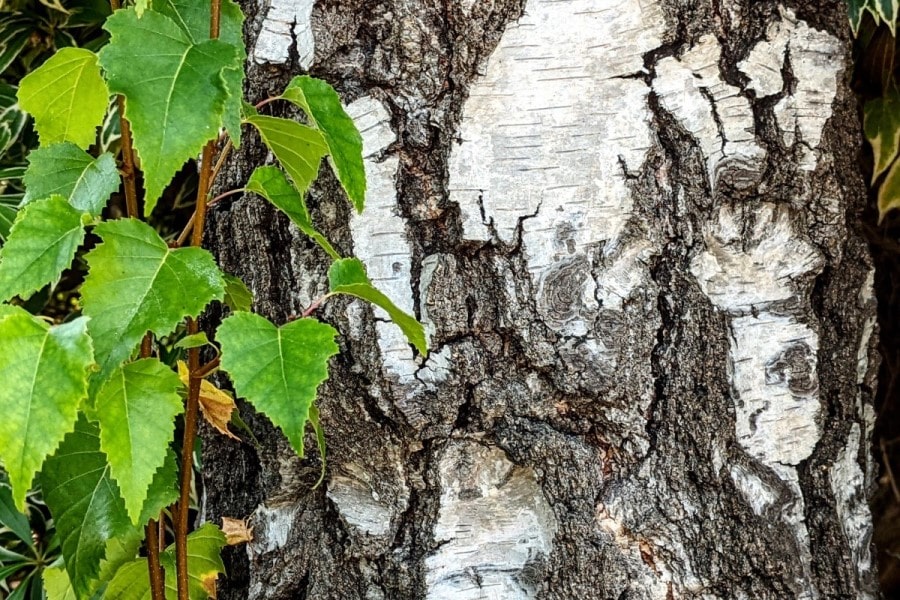
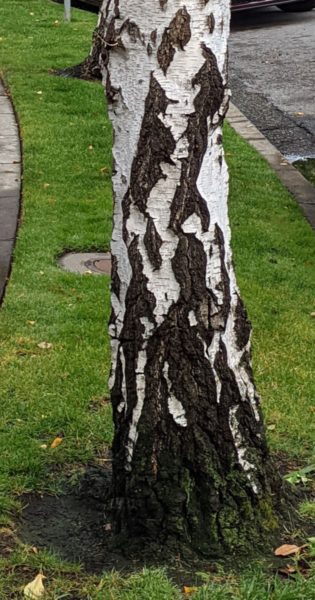
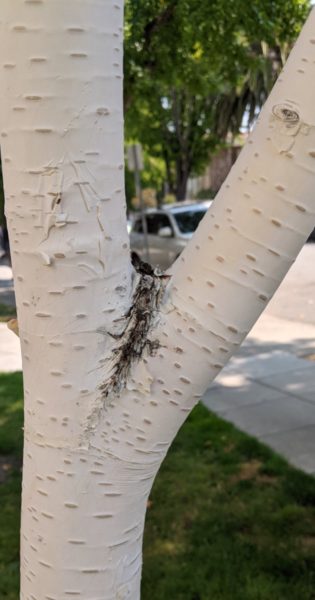

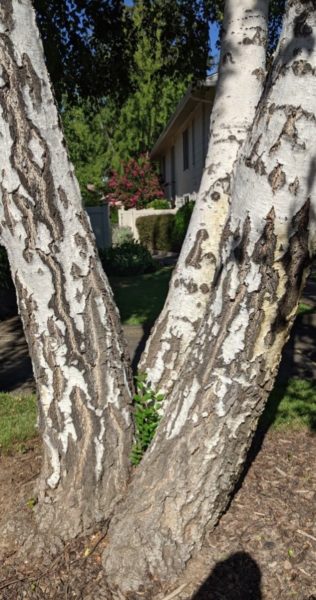

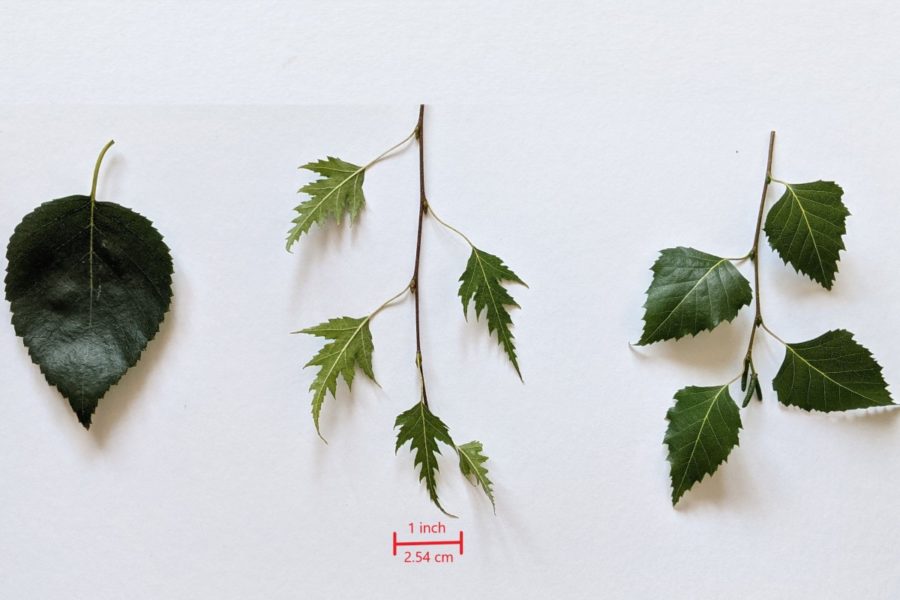

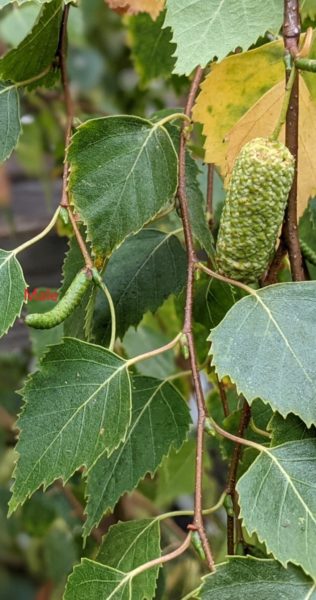
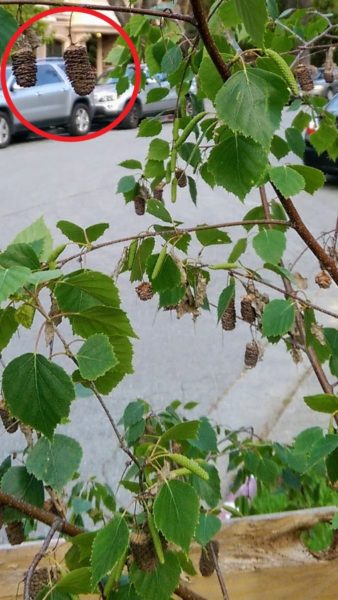
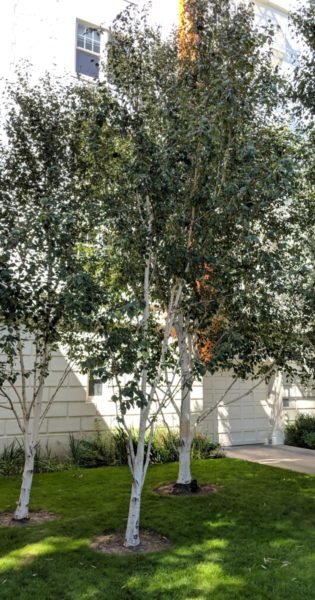


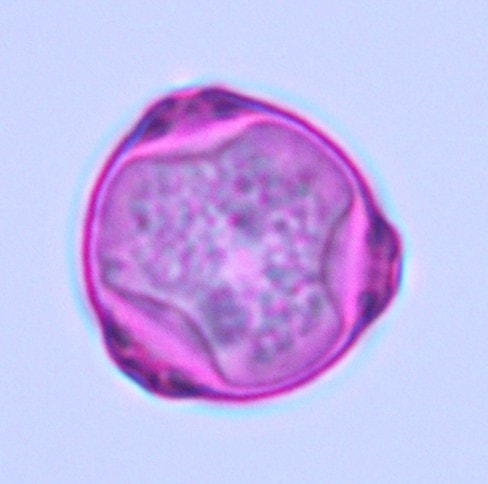


I believe I have a birch tree allergy. Starting about 3 years ago, I get terribly swollen and itchy eyes in the spring with runny nose for a couple weeks. I’ve noticed apples now cause me a terribly itchy scratchy throat. The apple issue is what led me to thinking my spring allergy is due to a birch tree. We have two large birch trees in our yard – one front, one back. Would I have any notable relief in the spring if we were to remove these two birch trees? There are other birch trees in the neighborhood. And we have 2 dogs, so they are bringing in pollen.
You should see an allergy doctor to first confirm the source of your allergies. The pollen count is exceptionally high near the source so you can certainly reduce your exposure to birch pollen by replacing the trees in your yards. Even if you do not have dogs the pollen is certainly going to get inside your home, in large quantities, if you have a tree in the yard.